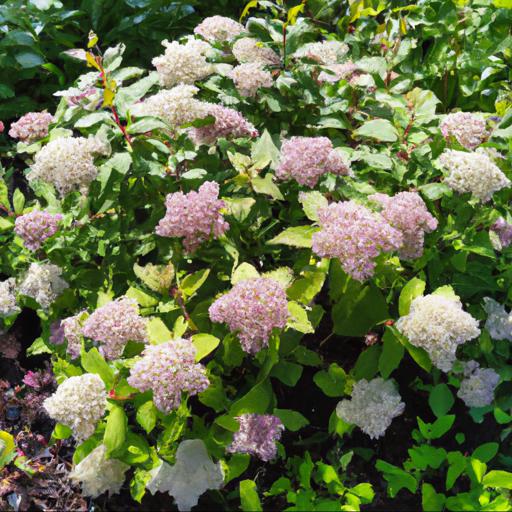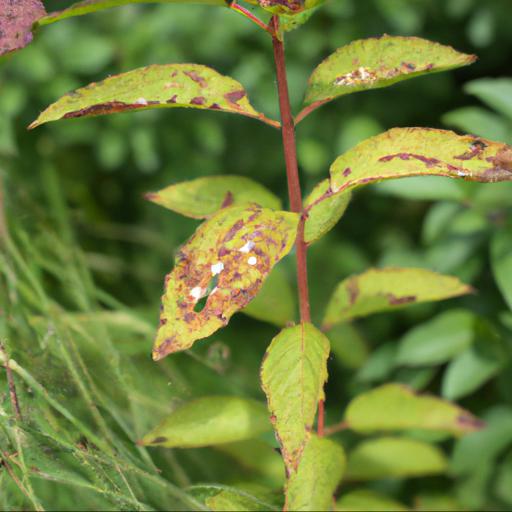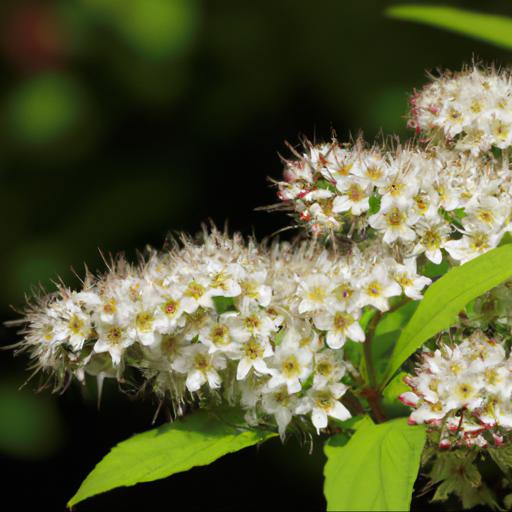Spiraea japonica albiflora is a beautiful flowering shrub native to Japan. It is a popular choice for gardens and landscaping due to its stunning white flowers and lush foliage.
This plant is relatively easy to maintain and is quite hardy, making it an ideal choice for gardeners of all experience levels. In this blog, we will look at the various benefits of Spiraea japonica albiflora, from its attractive blooms to its low-maintenance requirements. We will also discuss the best way to care for this plant and provide helpful tips for keeping it healthy and vibrant.
Benefits of growing spiraea japonica albiflora

Gardening experts the world over regard Spiraea japonica albiflora as one of the most beautiful and versatile ornamental shrubs available. Its fragrant white blooms that arrive in late spring and last through the summer months make it an ideal choice for any landscape.
However, the benefits of planting this particular species extend far beyond its aesthetic value. Not only will Spiraea japonica albiflora provide a colorful addition to any garden, it also offers a range of ecological and economic advantages, making it a valuable addition to any landscape. Spiraea japonica albiflora is known for its relatively low maintenance requirements.
It tolerates a range of soil conditions and needs only occasional pruning to maintain a neat and tidy appearance. This is particularly beneficial for those who may not have the time or the resources to maintain a more demanding garden. The shrub’s fragrant flower blooms also provide a great way to naturally enhance the natural environment.
Their attractive scent can attract a range of beneficial insects, such as bees, butterflies, and birds. These creatures will move from flower to flower as they search for food, thereby increasing the overall diversity of life in the garden.
They may also carry pollen from flower to flower, resulting in a healthier-looking garden while also taking on their role as important pollinators of other plants. The robust and versatile nature of Spiraea japonica albiflora makes it an ideal choice for both novice and experienced gardeners alike.
With its bright and fragrant flowers, it will add vibrancy and life to any garden, both in terms of increased biodiversity and the sheer aesthetic pleasure that it offers. So not only will planting this species bring a variety of benefits to the garden, but it will also serve as an economical choice for those looking to save money.
Tips for planting and caring for spiraea japonica albiflora

Gardening with Spiraea japonica albiflora is an enjoyable experience that can yield beautiful results in the landscape. Also known as white spirea, this deciduous shrub is compact and low-maintenance, making it perfect for those looking for a simple but stunning landscape addition.
With the right preparation and care, the white blooms of this shrub will thrive in your garden year after year. If you plan to plant this shrub in your garden, make sure to choose a sunny location that offers plenty of air circulation and protection from extreme temperatures. For optimal performance, it is best to add a soil conditioner or fertilizer mixture to the planting site to encourage healthy growth.
Once your shrub is established, use a slow-release fertilizer to promote lush foliage and floral blooms. Aside from fertilizing, Spiraea japonica albiflora requires very minimal maintenance.
Pruning is recommended in the spring to encourage better growth and promote new blooms. When pruning, remove any dead or diseased branches, as well as any that have become overgrown. This will help keep your shrub looking its best year-round.
When planting and maintaining your spiraea japonica albiflora, keep its likes and dislikes in mind for best results. This companionable shrub will be a low-maintenance, vibrant addition to any garden.
Common problems with spiraea japonica albiflora

Spiraea japonica albiflora, commonly known as snowmound spirea, is a versatile species of flowering shrub which is frequently grown for its lush, white blooms. This hardy shrub is a popular choice for many UK gardens, however, it is important that gardeners are aware of the problems which may arise when growing this plant. In this article, I will discuss the some of the most common challenges gardeners face when caring for this species.
One of the most common problems gardeners face when attempting to grow spiraea japonica albiflora is maintaining good soil drainage and texture. This species favors well-draining, fertile soils and will suffer in areas of poorly draining and/or acidic soils, resulting in stunted growth and infrequent flowering.
To prevent this problem, gardeners should ensure that their soils are well-draining and amended with organic material at least once a year. Pest and disease can also be a problem with spiraea japonica albiflora.
Aphids and thrips are known to feed on the soft growth of this species and can quickly overwhelm a plant. Pruning infected areas, natural predators and chemical insecticides can all be used to reduce population levels. Additionally, a number of fungal diseases, such as powdery mildew, may affect the health of the plant and regular treatment with appropriate fungicides, periodic pruning and adequate airflow are the best strategies to control the disease.
Finally, gardeners should monitor the plant’s location and climate carefully. This species is prone to frost damage and should not be planted in areas with hardiness that is lower than USDA Zone Moreover, this species prefers full sun exposure, and will suffer if planted in shaded areas with limited light reach.
Overall, spiraea japonica albiflora is a popular shrub for many UK gardens, however, gardeners should be aware of the common problems which can arise if this species is not grown and cared for properly. If gardeners are aware of these potential issues and take steps to address them, they can enjoy this versatile species in their garden for many years to come.
Conclusion
Spiraea japonica albiflora is an attractive, deciduous shrub with white flowers. It is easy to care for and grows well in full sun to partial shade.
It is drought tolerant and can reach up to 6 feet tall. It is a great addition to any garden, providing a beautiful backdrop for other plants. Its white flowers appear in early summer and attract pollinators such as butterflies and bees.
It is also deer and rabbit resistant, making it a great choice for gardens in areas with these animals.
FAQ
What is the scientific name of Spiraea japonica albiflora?
The scientific name of Spiraea japonica albiflora is Spiraea albiflora.
What is the natural habitat of Spiraea japonica albiflora?
The natural habitat of Spiraea japonica albiflora is moist, acidic soils in woodlands, thickets, and along streams in Japan, Korea, and eastern China.
What are the characteristics of Spiraea japonica albiflora?
Spiraea japonica albiflora is a deciduous shrub with arching branches and white flowers. It has dark green, lance-shaped leaves and grows to a height of 2 to 4 feet. It is a fast-growing plant and is tolerant of a wide range of soils and climates. It is also drought-tolerant and can be grown in full sun or partial shade.
How does Spiraea japonica albiflora reproduce?
Spiraea japonica albiflora reproduces by seed and vegetative means, such as layering and cuttings.
What are the uses of Spiraea japonica albiflora?
Spiraea japonica albiflora is a shrub that is often used as an ornamental plant in gardens and landscaping. It is also used for erosion control and as a hedge plant. It is also known for its medicinal properties and is used to treat various ailments such as colds, fever, and digestive issues.
How can Spiraea japonica albiflora be propagated?
Spiraea japonica albiflora can be propagated by softwood cuttings, layering, or division.

